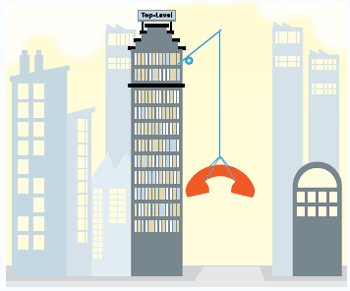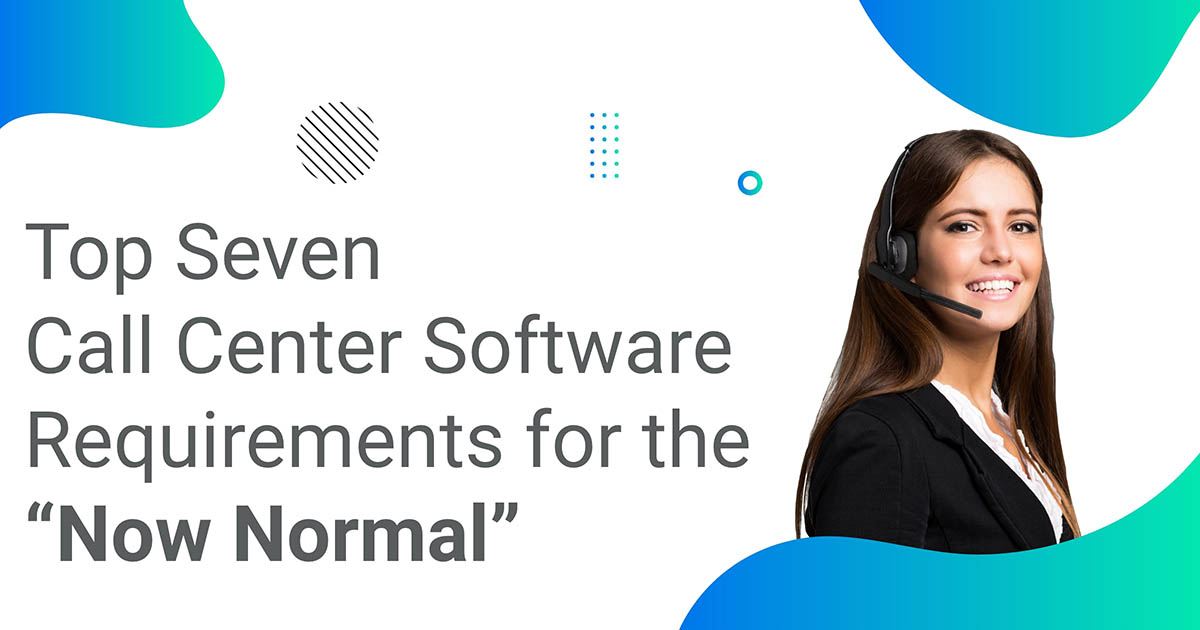Getting Top-Level Support for the Contact Center

Over the years, I’ve had the chance to speak with many world-class service providers—companies that are recognized as leading service providers within their industries. These companies stand out by putting their customers and frontline staff at the forefront of their processes and policies through demonstrated practices (think deeds, not words). One thing that all of these customer-centric companies have in common is top-level support for the contact center. That, and happy contact center leaders.
Getting executive backing is critical to the success of any customer-focused initiative—especially those that cross interdepartmental boundaries. You’d think that it would be fairly easy to get senior-level support for initiatives that enhance service delivery these days, given the tremendous amount of attention on customer experience. But industry research shows that, when it comes to improving the customer experience, it is still words, not deeds that is common practice. According to recent research by Forrester, 86% of companies claimed that customer experience was a top strategic priority for 2011, and that 76% of executives wanted to use their customer experience to differentiate their organizations. Yet barely half said that they measure and monitor the companywide customer experience, and only 35% said that customers’ needs are incorporated into the decision-making process (The State of Customer Experience, 2011, Forrester Research).

“Despite mission statements and core values that inevitably mention the organization’s total commitment to serving the customer, contact center leaders still find themselves waging an uphill battle for respect,” says Pipeline Founding Advisor Jay Minnucci, president of the independent consulting firm Service Agility. “We struggle to get the budgets passed, tools approved and initiatives supported that are required to fulfill our commitments and truly differentiate our service from the competition. While the economy is certainly a factor, the problem has been around for much longer than the current recession. The main reason for the disconnect between the vision of customer service and the actual investment in it is quite a bit closer to home—enterprise leadership does not fully buy into the value of service.
“We do not typically think of service as a concept that needs to be ‘sold,’ but it is, and contact center leaders are the ones who own the responsibility,” he says. “In contact centers, we spend most of our time convincing people that we do the job well, but we spend precious little time convincing internal decision makers that great service is a great investment. Convincing someone that you can do something better is relatively pointless until you can convince the person that the value of what you do is substantial.”
Be Prepared: Do Your Homework
So how do you change the CEO’s perception of the contact center? Where do you start? Remember that C-level execs have tight schedules and a lot of competition for their time. Before reaching out to your CEO, there are a few things that you can do to make sure that you’re fully prepared for the conversation.
 “First and foremost, you need to be on top of your game,” says Tim Montgomery, CEO at CSG (Culture.Service.Growth.), a provider of call center outsourcing, consulting and management services. “Make sure that you have a solid understanding of how to intelligently describe the tactical stuff, and make the connection between the contact center and the value that it brings to the company. Even if you’ve been working in call centers for years, you’ll want to refresh your knowledge to ensure that you’re saying the right things with confidence and in a way that will pique your CEO’s interest.”
“First and foremost, you need to be on top of your game,” says Tim Montgomery, CEO at CSG (Culture.Service.Growth.), a provider of call center outsourcing, consulting and management services. “Make sure that you have a solid understanding of how to intelligently describe the tactical stuff, and make the connection between the contact center and the value that it brings to the company. Even if you’ve been working in call centers for years, you’ll want to refresh your knowledge to ensure that you’re saying the right things with confidence and in a way that will pique your CEO’s interest.”
Senior execs are more likely to relate to you if you know how to speak their language. That requires a firm grasp of financial terms. Also, avoid using call center-related acronyms and jargon when speaking with the CEO. Think in terms of the company’s pain points and solutions that you can provide. (Read more about speaking the CEO’s language in “Speak the Right Language: Adopt Top-Down Thinking” below)
Practical Pointer: Montgomery suggests that, the next time you’re in your senior exec’s office, take note of which newspapers, magazines and books are laying around—and then get a copy for yourself. “Many times, senior executives’ ideas and strategies are derived from popular business books and non-call center periodicals,” he says. “You’d be surprised at how many ideas and theories from mainstream articles and books can be applied to the call center environment. The best part is, you can use it as point of reference the next time you have an opportunity to ‘talk call centers’ with the boss.”
Get the CEO to Define the Customer Experience Vision

If you’re finding it difficult to get some face time with the executive team, you might be tempted to work around the situation by first promoting your vision to your peers in other business units. While you may be able to get your colleagues on board, you’re still facing a tough uphill battle if you don’t have the CEO’s backing. “The members of the executive team are the only ones who can influence crossfunctional alignment to the point of it actually happening,” says Kathleen Peterson, founder and chief vision officer of PowerHouse Consulting. “Linear negotiations with even the strongest demonstrations of ‘why it matters that we work together’ will never have the kind of leverage that a senior executive has.”
So you’ve prepared yourself, you’ve been persistent and you’ve finally landed that allimportant audience with your executive team. How do you make the most of your time? “Get the execs to identify the company’s vision, financial objectives and the component parts of the customer experience organized around the translation of that customer experience into an operational reality,” says Peterson. She suggests trying this exercise with your execs: Ask them to describe to you their vision of the customer experience. What do they want it to be? They may respond with words and phrases like “efficient,” “consistent,” “exciting” or “delighting the customer.” Next, ask them to tell you what that looks like and feels like for the customer. For instance, when an executive says, “We want the customer experience to be efficient,” you might ask whether an “efficient” experience translates into first-call resolution. If yes, then you can describe to them what needs to occur in the contact center to achieve FCR.
Continue drilling down and developing the customer experience vision around clear, definable goals. Take the executive team down this path until they identify systems, tools, training and a budget allocated to meeting those goals. “When you get to the point where you want to buy technology, invest in training, improve your hiring or recruiting, or improve the management of information, now you’ve got a point of reference that the executive level has participated in and has agreed to,” Peterson says. Practical Pointer: If you don’t have direct access to your executive team, refer to your company’s annual report. “Review the letter from the CEO and/or chairman of the board that outlines the company’s future objectives—both from a financial vision and a customer experience perspective,” Peterson says. “You can track those objectives and make associated connections before sending your requests upstairs to be blessed.”
Speak the Right Language: Adopt Top-Down Thinking
 Contact center leaders traditionally have operated using bottom-up thinking in which tools and resources are positioned in isolation—for instance, “I need a workforce management system to build a better schedule” or “I need to hire more agents so that we can meet our service level.”
Contact center leaders traditionally have operated using bottom-up thinking in which tools and resources are positioned in isolation—for instance, “I need a workforce management system to build a better schedule” or “I need to hire more agents so that we can meet our service level.”
Bottom-up thinking leads to bad technology choices, poor process design and inefficient crossfunctional relationships, says Peterson. And you’re not likely to have much success getting executive support for your cause by relying solely on traditional contact center metrics, such as service level or abandonment rates. “You shouldn’t stop reporting on classic contact center metrics, but you need to contextualize those in formats that the senior level will understand,” she says. “Start thinking the way that executives think—in terms of revenue, margins, market share and customer experience. Every time you make a recommendation for process improvement, an investment in systems, training or staff, relate it to a senior-level category, such as the impact on the overall vision, financial growth and efficiency, and the customer experience. Adopting top-down thinking will allow you to build a relationship of mutual respect.”
Carol Borghesi agrees that high-level thinking is key to garnering respect and attention from the C-suite. “Executives are far more likely to provide support for customer strategy initiatives versus a contact center strategy,” she says. Why? “Invariably, we do one-off types of projects for which it’s difficult to understand how they will deliver a differential advantage for the company,” she explains. “Taking a wider perspective than simply the call center enables executives to appreciate that, yes, the contact center is a cost item, but there are also important advantages to looking at revenue retention stimulation and the reduction of lost customer business.
“When contact center leaders take the steps to put together an overarching customer strategy, it is a lot easier to get the requisite funding,” she adds. “Executives are sensitive to failures at the point of customer contact in their organizations, but they are not necessarily willing to spend additional money to support creating a better experience without some kind of return.”
Borghesi, who is senior vice president, Customers First Culture at TELUS, a leading national telecommunications company in Canada, advises contact center leaders to become either the subject-matter experts or the owners of the voice of the customer data in partnership with marketing. “To make a credible case for resources or investments, you want to be able to link your KPIs to the voice of the customer and customer outcomes, notably, the pain points, such as customer dissatisfaction or customer defection. Then you’ve got something that anchors back into the company’s overall strategic plans and links the day-to-day elements.”
Your ability to gain access to customer data and quickly share information that is relevant with other departments will help you to position the contact center as a valuable contributor to the overall company vision. “Then your visibility determines your opportunity, not your function,” Peterson says. “It’s how you manage how you are seen. If you only report on productivity, then you’re only going to be seen as a factory. On the other hand, if you use information as a currency with regard to the customer experience and the ongoing investments that contribute to efficiency and growth, then you’re going to enjoy a higher level of respect and opportunity, and you’ll be in a position to nurture your relationship with senior-level executives.“
Practical Pointer: To deliver a message with impact via your analytical reports, Minnucci suggests keeping the following in mind: 1) The most accessible data is not necessarily the best data; 2) analysis is what transforms a report from information into knowledge; and 3) every audience is different.
Make Executive Engagement Experiential
In world-class service companies, the C-suite has a clear understanding of the contact center’s role and responsibilities, and they tend to have a strong connection with their customerfacing staff. A common theme in these companies is that senior management takes the time to walk in the customer service reps’ shoes on a regular basis, says Montgomery. “Some of the most famous service companies require that all senior executives become certified in frontline service and have the ability to take calls,” he says. “This creates more than visibility on the floor; it helps senior management identify new ways to make it easier for their front line to deliver world-class service.”
Getting senior executives involved on the front line is a practice that Borghesi believes has transformed the culture at TELUS. “We have created an organizational discipline about being closer to the customer,” she says. The firm’s approach was designed so that executives are fully engaged with customer-facing employees. Rather than brief walk-throughs or plugging in with an agent for a few calls, TELUS execs are committed to working a full shift on the front lines with a call center agent, field engineer or in a retail store.
“They get to learn what it’s like to handle 50 or 60 calls per shift,” Borghesi explains. “When you’re only looking at statistics, you can very easily forget that there are customers at the other end of those results. Making the engagement process with executives experiential is an effective way to get them to act and support a culture of putting customers first.”
Changing Long-Held Beliefs About the Contact Center
Changing long-held beliefs about the value that the contact center provides is not easy, so how do you go about it? Specifics will vary by the company and personalities involved, but the areas to address remain the same. You need to develop a plan that, at a minimum, touches on three issues:
Your access to customer information.
Contact centers converse with hundreds or thousands of customers each day. The information you can glean from those interactions is immensely powerful, and goes beyond simply recording call categories in a CRM system. Spend some time with other departments to find out what they need to know about customers, and then make plans to deliver it.
Metrics.
Chances are, the reports that you use today are focused almost exclusively on how well you perform, not how much value you generate. Yes, service level and quality rates matter— but, for most of us, so should cross-sell opportunities and loyalty rates. Change your reports to show value metrics first and competency metrics second.
Budgets.
Most budgets feature costs. Start building impact-based budgets that clearly explain the payoff of different options. Want to increase staff so you can spend more time in training and coaching activities? Your budget should not only show the cost, but also the benefits. For example, higher performing agents may result in reduced turnover, lower handle time, fewer complaints and callbacks, error reductions, etc. One version of your budget should show this.
Your language is probably dominated by discussions of competency and related activities. Your communication with internal decision makers should also be infused with the value of what you do. How do you contribute directly and indirectly to loyalty and repeat revenue? What does your organization know about customers based on your work, and how has that influenced other key decisions in the business? How have you provided nearly instant feedback on new issues or problems and how has that helped to avoid complaints, lawsuits and negative publicity? You want people to know that your team does their job well… but they first have to know that the job matters.

